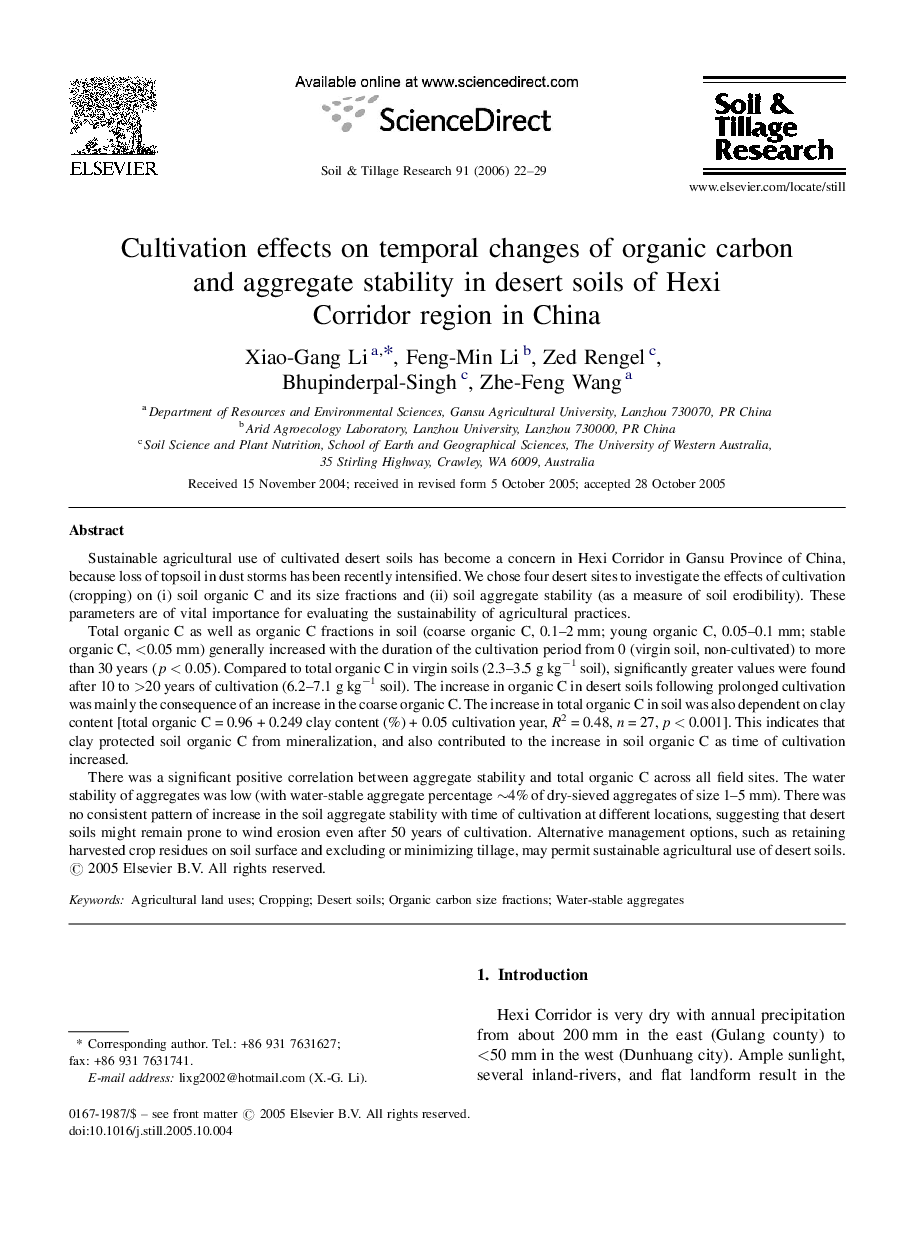| Article ID | Journal | Published Year | Pages | File Type |
|---|---|---|---|---|
| 306839 | Soil and Tillage Research | 2006 | 8 Pages |
Sustainable agricultural use of cultivated desert soils has become a concern in Hexi Corridor in Gansu Province of China, because loss of topsoil in dust storms has been recently intensified. We chose four desert sites to investigate the effects of cultivation (cropping) on (i) soil organic C and its size fractions and (ii) soil aggregate stability (as a measure of soil erodibility). These parameters are of vital importance for evaluating the sustainability of agricultural practices.Total organic C as well as organic C fractions in soil (coarse organic C, 0.1–2 mm; young organic C, 0.05–0.1 mm; stable organic C, <0.05 mm) generally increased with the duration of the cultivation period from 0 (virgin soil, non-cultivated) to more than 30 years (p < 0.05). Compared to total organic C in virgin soils (2.3–3.5 g kg−1 soil), significantly greater values were found after 10 to >20 years of cultivation (6.2–7.1 g kg−1 soil). The increase in organic C in desert soils following prolonged cultivation was mainly the consequence of an increase in the coarse organic C. The increase in total organic C in soil was also dependent on clay content [total organic C = 0.96 + 0.249 clay content (%) + 0.05 cultivation year, R2 = 0.48, n = 27, p < 0.001]. This indicates that clay protected soil organic C from mineralization, and also contributed to the increase in soil organic C as time of cultivation increased.There was a significant positive correlation between aggregate stability and total organic C across all field sites. The water stability of aggregates was low (with water-stable aggregate percentage ∼4% of dry-sieved aggregates of size 1–5 mm). There was no consistent pattern of increase in the soil aggregate stability with time of cultivation at different locations, suggesting that desert soils might remain prone to wind erosion even after 50 years of cultivation. Alternative management options, such as retaining harvested crop residues on soil surface and excluding or minimizing tillage, may permit sustainable agricultural use of desert soils.
